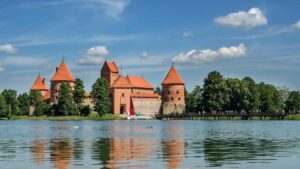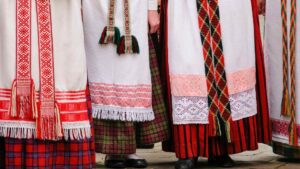10 Best Places to Visit in Lithuania
Lithuania, a hidden gem nestled in the northeastern part of Europe, beckons travelers with its stunning blend of natural beauty, rich history, and vibrant culture. This enchanting country, often overshadowed by its more famous European neighbors, offers a treasure trove of experiences that captivate the heart and ignite the imagination. From the cobblestone streets of its ancient cities to the serene expanses of its natural landscapes, Lithuania presents a diverse canvas that appeals to a wide array of interests. Its capital, Vilnius, is a testament to the country’s deep historical roots and architectural grandeur, featuring a UNESCO World Heritage-listed Old Town that is one of the largest and most preserved in Europe. Beyond the urban allure, Lithuania’s countryside unfolds into a picturesque scene of rolling hills, dense forests, and sparkling lakes, offering an idyllic backdrop for outdoor adventures. The Baltic Sea graces its western border, providing stunning coastal vistas and sandy beaches. But what truly sets Lithuania apart is its vibrant cultural tapestry, woven with traditional music, dance, and a calendar brimming with festivals that celebrate the nation’s heritage. We invite you to embark on a journey, uncovering ten best places and destinations to visit in Lithuania that showcase the unique charm and enduring spirit of this captivating country.
1. Vilnius: A Fusion of Historical Grandeur and Modern Vibrancy
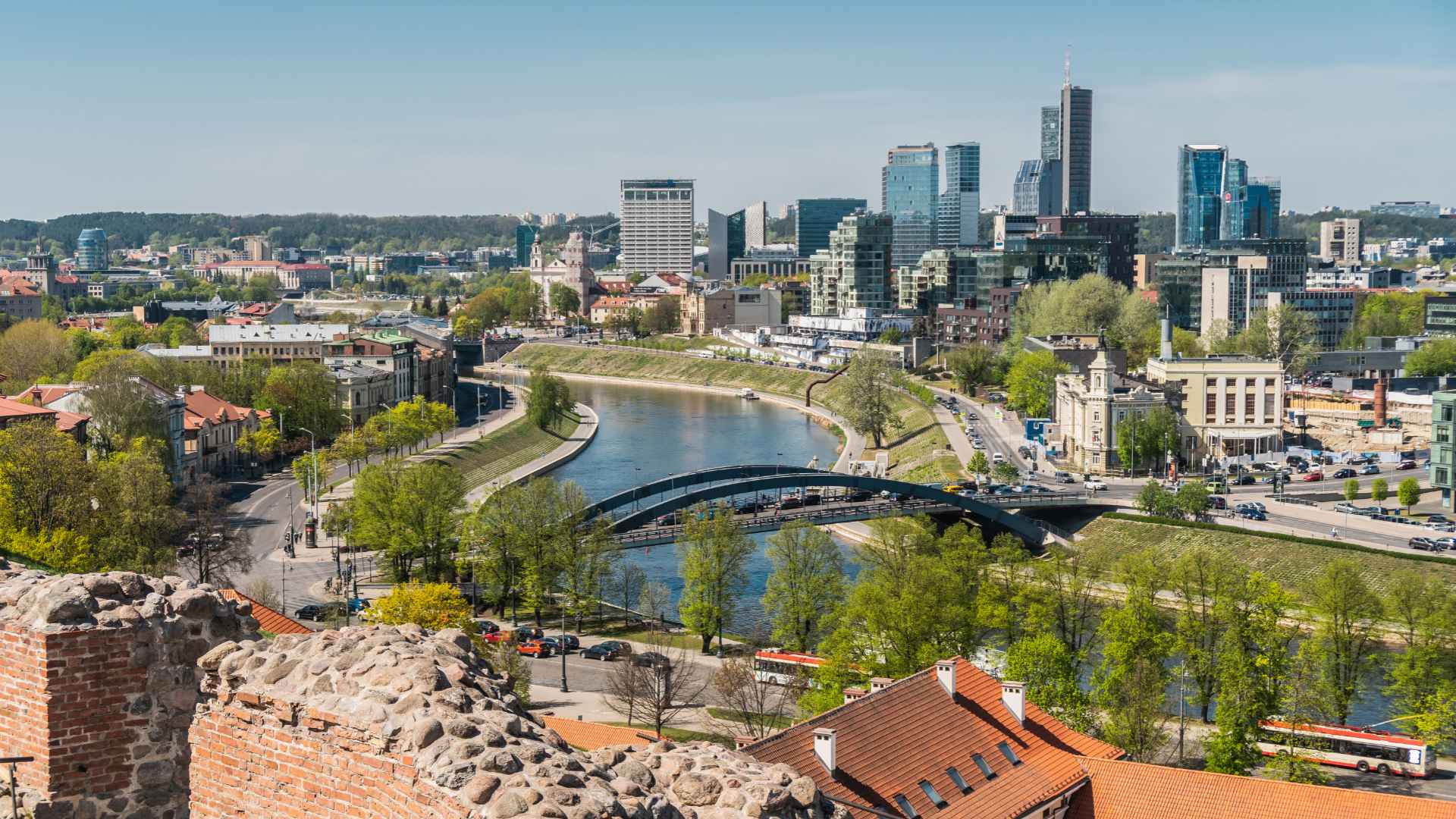
Vilnius, Lithuania’s capital, is a city where centuries of history blend seamlessly with contemporary culture, creating an atmosphere that’s both enchanting and dynamic. Walking through the streets of Vilnius is like stepping back in time, with its medieval architecture, gothic spires, and baroque facades narrating stories of a bygone era. The heart of this historical narrative is the Old Town, a UNESCO World Heritage site, characterized by its winding cobblestone lanes and picturesque courtyards.
Yet, Vilnius is not just a relic of the past; it’s a city that pulses with life, evident in its vibrant arts scene, bustling cafes, and innovative culinary ventures that have put it on the map as an emerging European gastronomy hotspot. The city’s cultural landscape is dotted with galleries, theaters, and museums, including the contemporary MO Museum and the poignant KGB Museum, which offers a stark reminder of Lithuania’s 20th-century struggles for freedom. Beyond its cultural and historical riches, Vilnius is surrounded by natural beauty, from the tranquil banks of the Neris River to the panoramic views at Gediminas’ Tower, offering a blend of urban and natural attractions. This unique mix of old and new, tradition and innovation, makes Vilnius a captivating destination for travelers seeking depth, diversity, and discovery. Without a doubt, Vilnius is a must place to visit in Lithuania.
2. Trakai Island Castle: A Medieval Marvel on Water
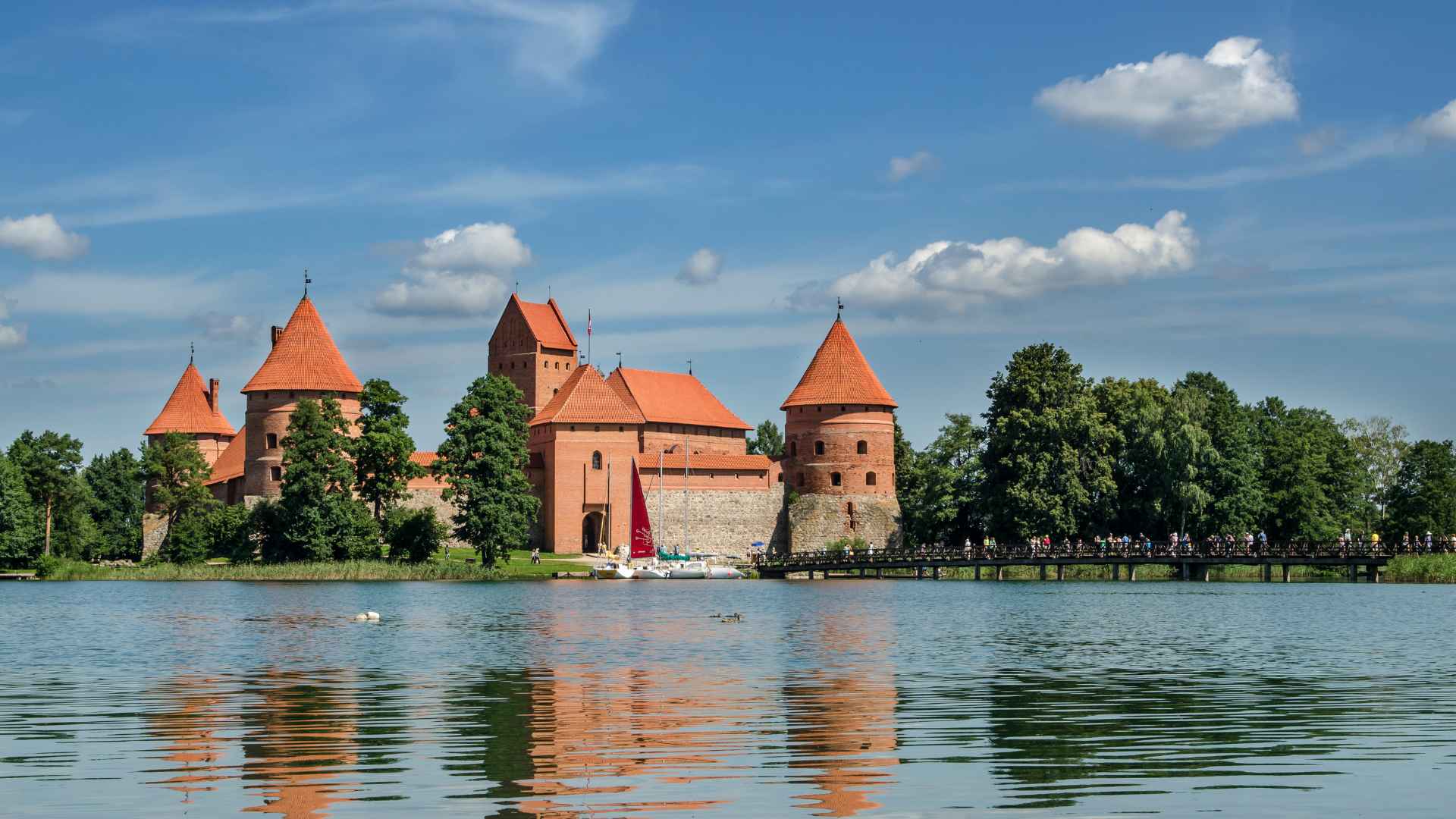
Trakai Island Castle, a majestic historical landmark, stands as a testament to Lithuania’s medieval grandeur. Nestled on an island in Lake Galvė, this fairy-tale fortress captivates visitors with its picturesque setting and architectural splendor. Built in the 14th century by the Grand Dukes of Lithuania, it served as a strategic military stronghold and a symbol of the Lithuanian state’s power. Today, it has been meticulously restored to its former glory, inviting travelers to step into a world where history comes vividly to life. Crossing the wooden bridge to the island, one feels transported to a bygone era, where knights, dukes, and intrigue ruled the day. The castle’s red-brick towers and defensive walls contrast beautifully with the serene blue waters of the lake, creating a scene that seems lifted from the pages of a storybook.
Inside, the castle houses a museum that showcases artifacts from medieval Lithuania, offering insights into the lives of its former inhabitants, their culture, and their battles. The surrounding lake and forests provide a peaceful backdrop, perfect for leisurely exploration by boat or on foot. Trakai Island Castle is not just a monument to the past; it is a living, breathing place where history, nature, and culture intertwine, offering a truly enchanting experience. And considering it is only 17 miles (27 km) from Vilnius, it is a must visit place in Lithuania.
3. The Curonian Spit: Nature's Masterpiece Between Seas
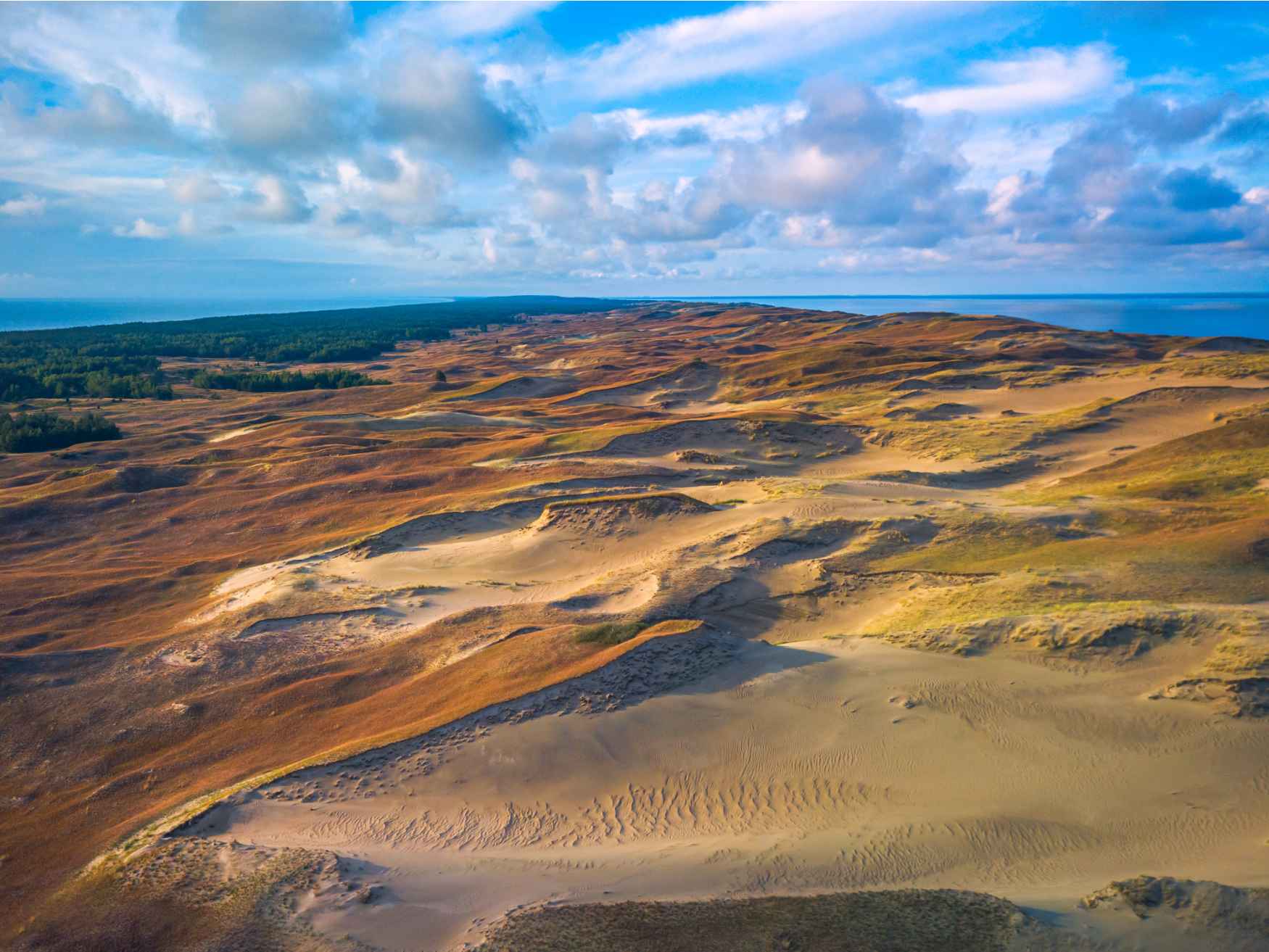
The Curonian Spit is a stunning natural wonder that stretches across the Baltic Sea, a geographical masterpiece that divides the Curonian Lagoon from the Baltic Sea. This narrow strip of land, shared by Lithuania and Russia, is famed for its ethereal landscapes, shifting sand dunes, and lush pine forests, creating a unique ecosystem that is both delicate and dramatic. Its largest dunes, such as the Parnidis Dune, offer breathtaking panoramic views that extend across the spit, encapsulating the raw beauty of this UNESCO World Heritage site.
The Curonian Spit is not only a haven for nature enthusiasts but also a place steeped in cultural and historical significance. The traditional fishermen’s villages dotted along the spit, such as Nida and Juodkrantė, are picturesque and charming, with brightly colored wooden houses and age-old traditions that continue to thrive. The area’s history is also marked by the ancient pagan rituals and myths of the Baltic tribes, adding a layer of mystique to its already captivating landscape. Moreover, the spit is a sanctuary for a diverse range of flora and fauna, making it a prime spot for bird watching, especially during migration seasons. A visit to the Curonian Spit is a journey into the heart of nature’s artistry, where the forces of wind and water have sculpted a landscape of unparalleled beauty and tranquility. If you are travelling in summer, this is definitely one of the best places to visit in Lithuania.
4. Kaunas: A Cultural Hub with a Dynamic Past
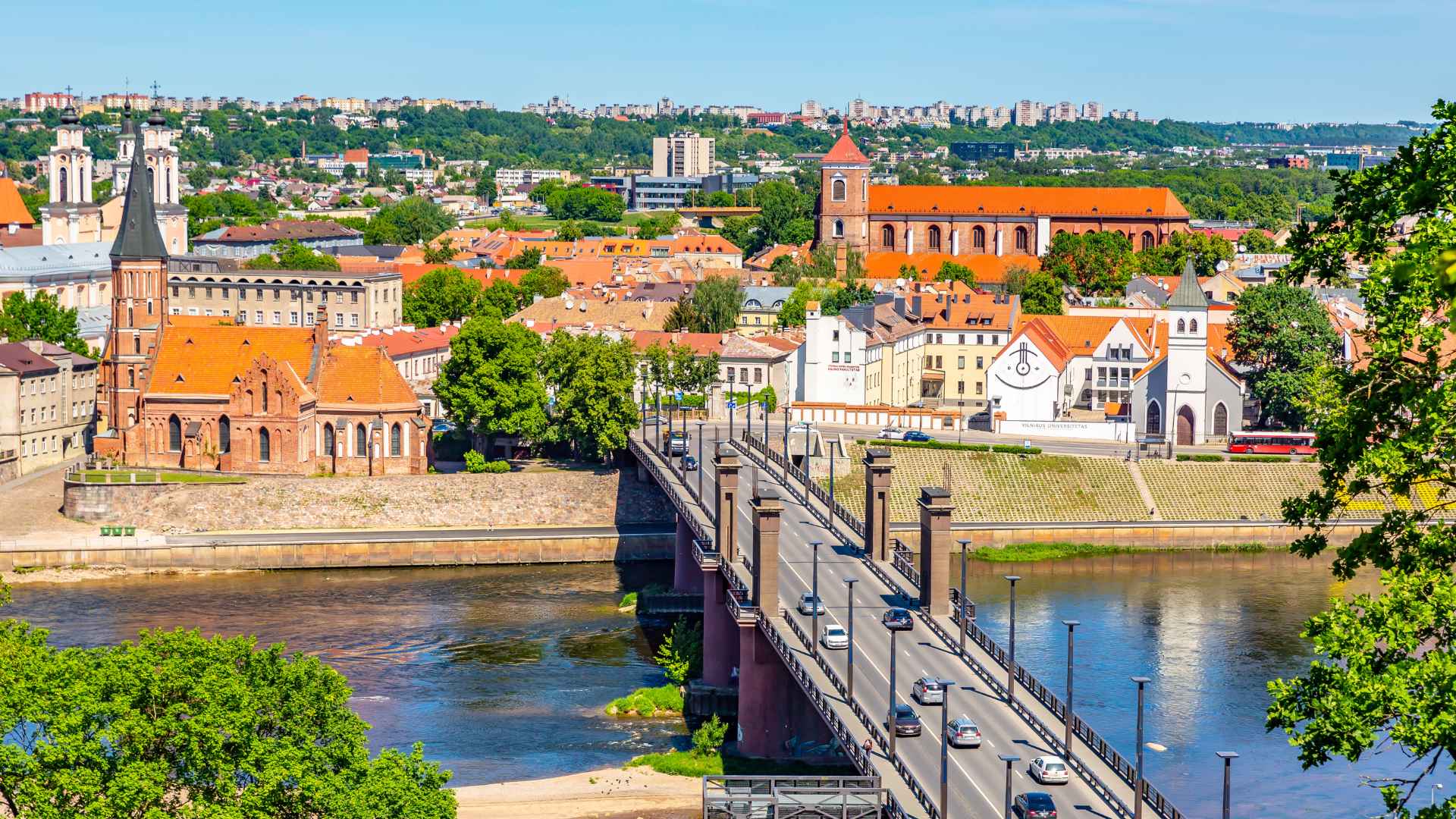
Kaunas, Lithuania’s second-largest city, stands at the confluence of the country’s two major rivers, the Nemunas and the Neris, and serves as a vibrant cultural and historical center. Its significance stretches back to medieval times, but it’s perhaps best known for its role in the interwar period when it served as the temporary capital of Lithuania. This era endowed Kaunas with a wealth of modernist architecture, earning parts of the city a designation as a UNESCO World Heritage site. The city’s streets and squares are lined with buildings that showcase a range of architectural styles, from Gothic and Renaissance to Baroque and Art Deco, reflecting its rich and diverse history.
Beyond its architectural gems, Kaunas is alive with contemporary culture, hosting numerous festivals, exhibitions, and performances throughout the year. Its dynamic cultural scene is complemented by a plethora of museums, including the M.K. Čiurlionis National Museum of Art, which pays homage to Lithuania’s most celebrated artist and composer. The city also offers lush parks and recreational areas along its rivers, providing a picturesque setting for leisurely walks or picnics.
Kaunas’s old town is a delight to explore, with its historical buildings, cozy cafes, and artisan shops, while the city’s commitment to arts and culture can be seen in its vibrant street art and the Kaunas 2022 European Capital of Culture program. With its unique blend of history, culture, and natural beauty, Kaunas invites visitors to delve into its past and experience its lively present.
5. The Hill of Crosses: A Symbol of Faith and Resistance
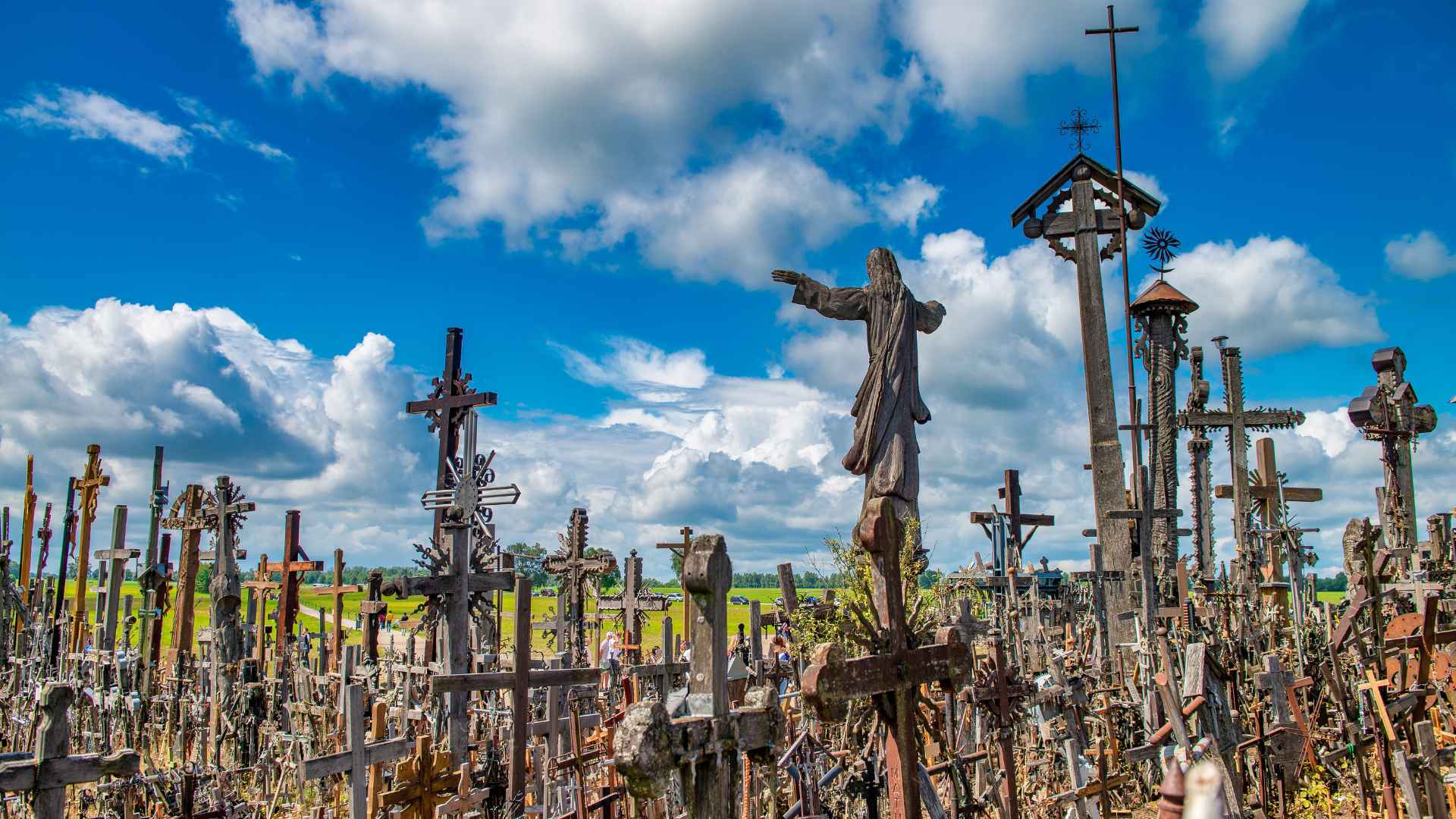
The Hill of Crosses, located just north of the city of Šiauliai, is a profound symbol of Lithuanian faith, perseverance, and national identity. This sacred site, covered with over 100,000 crosses, crucifixes, statues of the Virgin Mary, and rosaries, represents the collective defiance and resilience of the Lithuanian people. The tradition of placing crosses on this small hill began in the 1831 uprising against the Russian Empire, and despite repeated attempts by Soviet authorities to destroy the site and remove the crosses, it continued to grow, embodying the unbreakable spirit of the Lithuanian people.
Each cross tells a story, a personal or collective petition for blessings, remembrance of the deceased, or expressions of national pride and hope for freedom. The sheer number and variety of crosses create an overwhelming and poignant landscape, resonating with the deep spiritual and historical significance that transcends religious boundaries. The site has also been visited by figures such as Pope John Paul II, further cementing its status as a place of pilgrimage and reflection.
The Hill of Crosses is not just a testament to Lithuania’s turbulent history; it is a vibrant, living monument to faith, freedom, and the indomitable human spirit. Visitors leave moved by the sight of thousands of crosses whispering the stories of a nation’s struggles and victories, a powerful reminder of the endurance and resilience that define the human condition.
6. Klaipėda: Gateway to the Baltic's Maritime Wonders
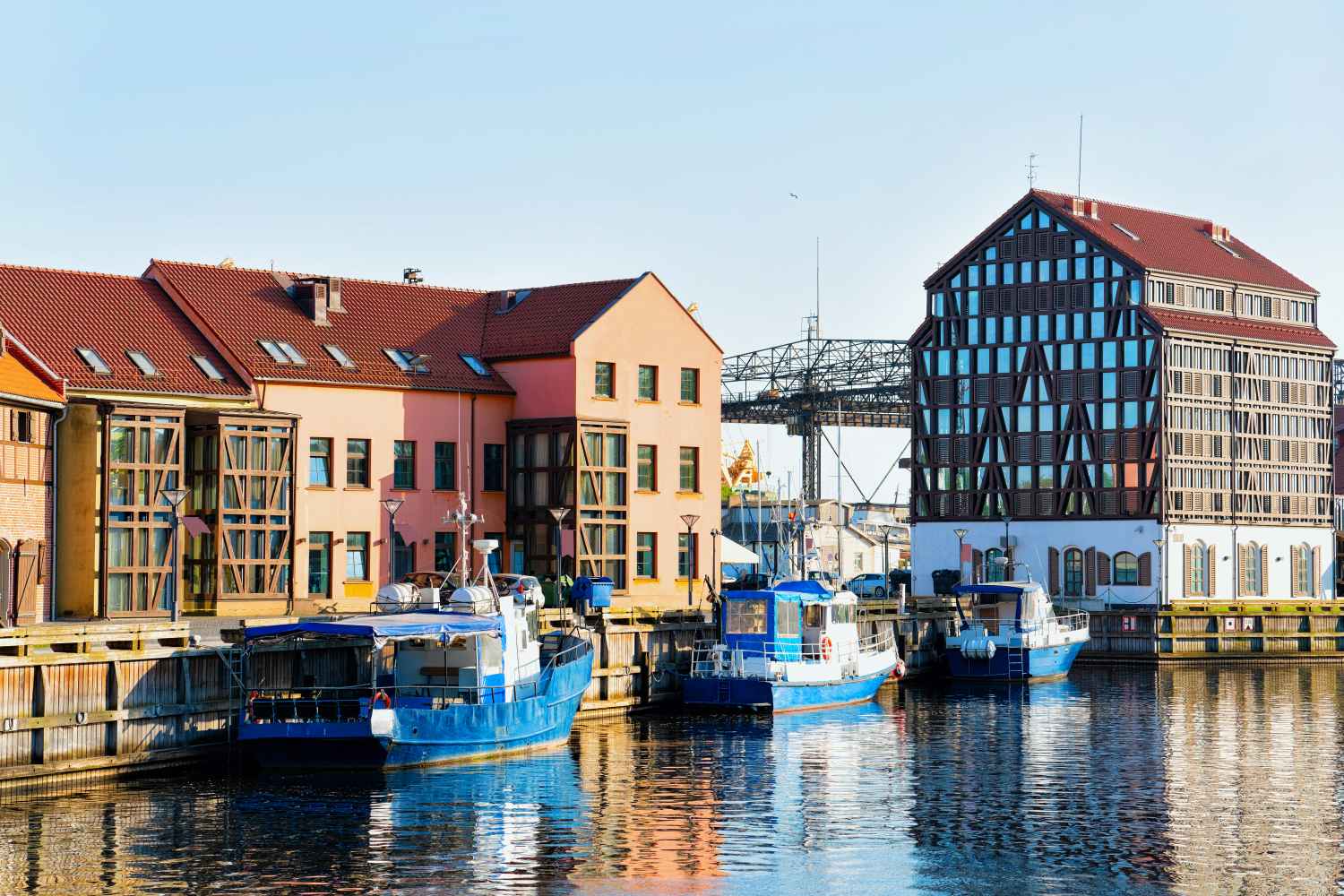
Klaipėda, Lithuania’s third-largest city, stands as the country’s maritime heart, with its deep historical ties to the sea evident in its bustling port, ancient architecture, and the salty tang of Baltic breezes. This coastal city, with its unique blend of Lithuanian and Germanic influences, offers a distinct cultural tapestry that reflects its complex history of Teutonic Knights, Prussian rule, and Lithuanian resilience. The Old Town, characterized by quaint, cobblestone streets and charming half-timbered buildings, invites visitors to wander and discover the blend of cultures that shapes this city. The Theatre Square, with its iconic sculpture of Ann from Tharau, serves as the city’s cultural epicenter, hosting a variety of festivals, concerts, and public gatherings throughout the year.
Klaipėda’s connection to the sea is celebrated in its maritime museum and aquarium, providing insights into the Baltic’s nautical heritage and marine life. The city also serves as a gateway to the Curonian Spit, a stunning natural wonder and UNESCO World Heritage site, easily accessible via ferry. Here, visitors can explore pristine sandy beaches, towering dunes, and serene pine forests. Klaipėda’s vibrant port, historical richness, and scenic beauty make it a captivating destination for those seeking to explore Lithuania’s maritime legacy and enjoy the tranquil allure of the Baltic coast.
7. Aukštaitija National Park: Lithuania's Pristine Wilderness
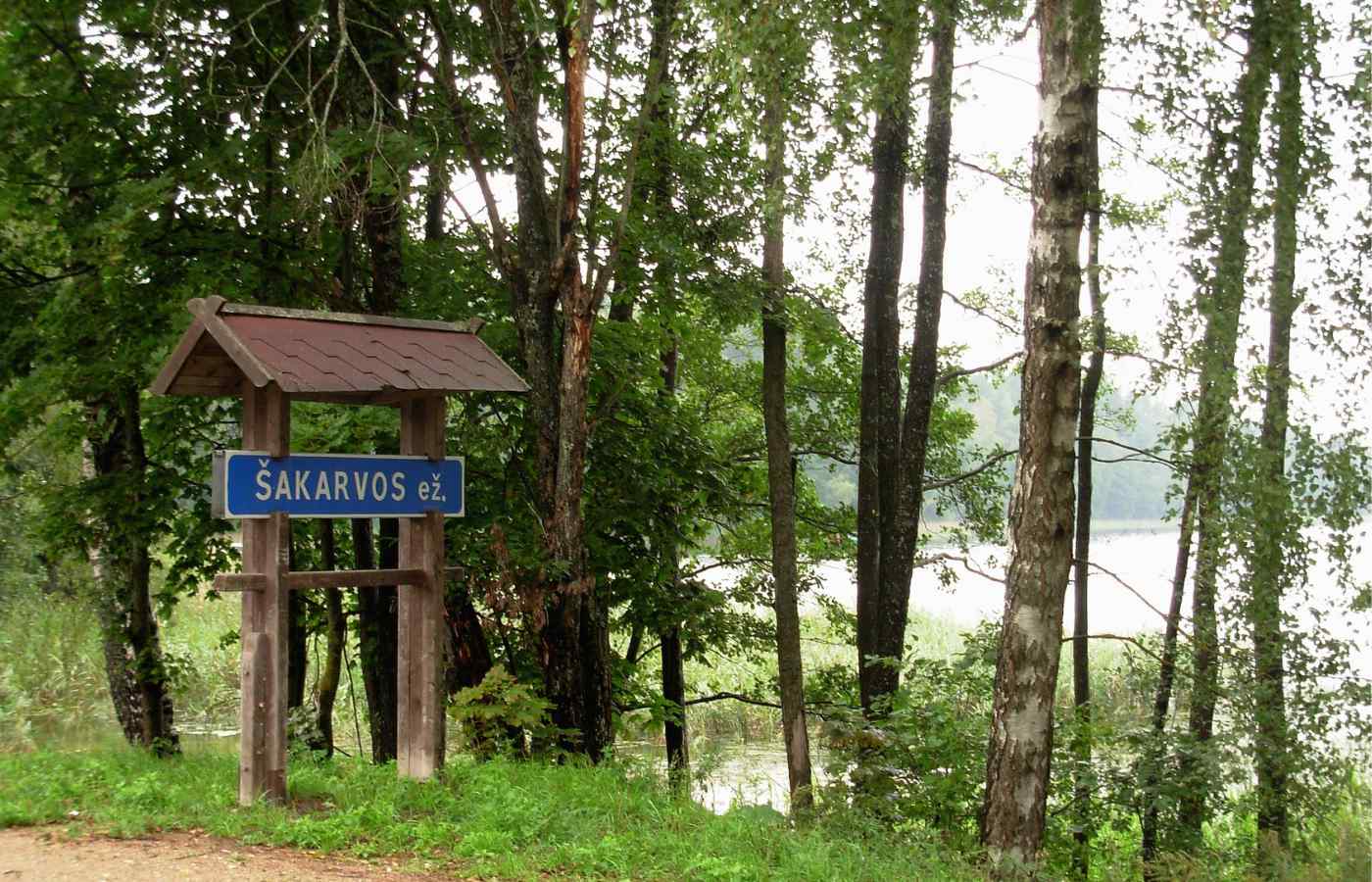
Aukštaitija National Park, Lithuania’s oldest national park, established in 1974, is a splendid showcase of the country’s natural beauty and biodiversity. Sprawling over an area of more than 40,000 hectares, it offers a serene escape into nature, with over a hundred lakes, dense forests, and rolling hills that paint a picture of untouched wilderness. This park is not just a haven for nature enthusiasts but also a living museum of Lithuanian rural life, with small villages and traditional wooden houses scattered throughout its expanse, allowing visitors to glimpse into the country’s pastoral heritage.
Hiking, canoeing, and cycling are popular activities, offering immersive ways to explore the park’s vast landscapes. The trails lead adventurers through lush forests, alongside crystal-clear lakes, and to scenic viewpoints that offer breathtaking vistas of the natural surroundings. One of the park’s highlights is the ancient Beekeeping Museum, which offers fascinating insights into the traditional craft of beekeeping, a practice deeply rooted in Lithuanian culture and history.
Aukštaitija National Park is a testament to Lithuania’s commitment to preserving its natural and cultural heritage. Its diverse ecosystems, historical villages, and tranquil beauty make it an essential destination for anyone seeking to connect with nature and discover the rich tapestry of Lithuanian rural traditions. If you like nature, Aukštaitija National Park should be definitely on your list of the best places to visit in Lithuania.
8. Druskininkai: A Haven of Wellness and Tranquility
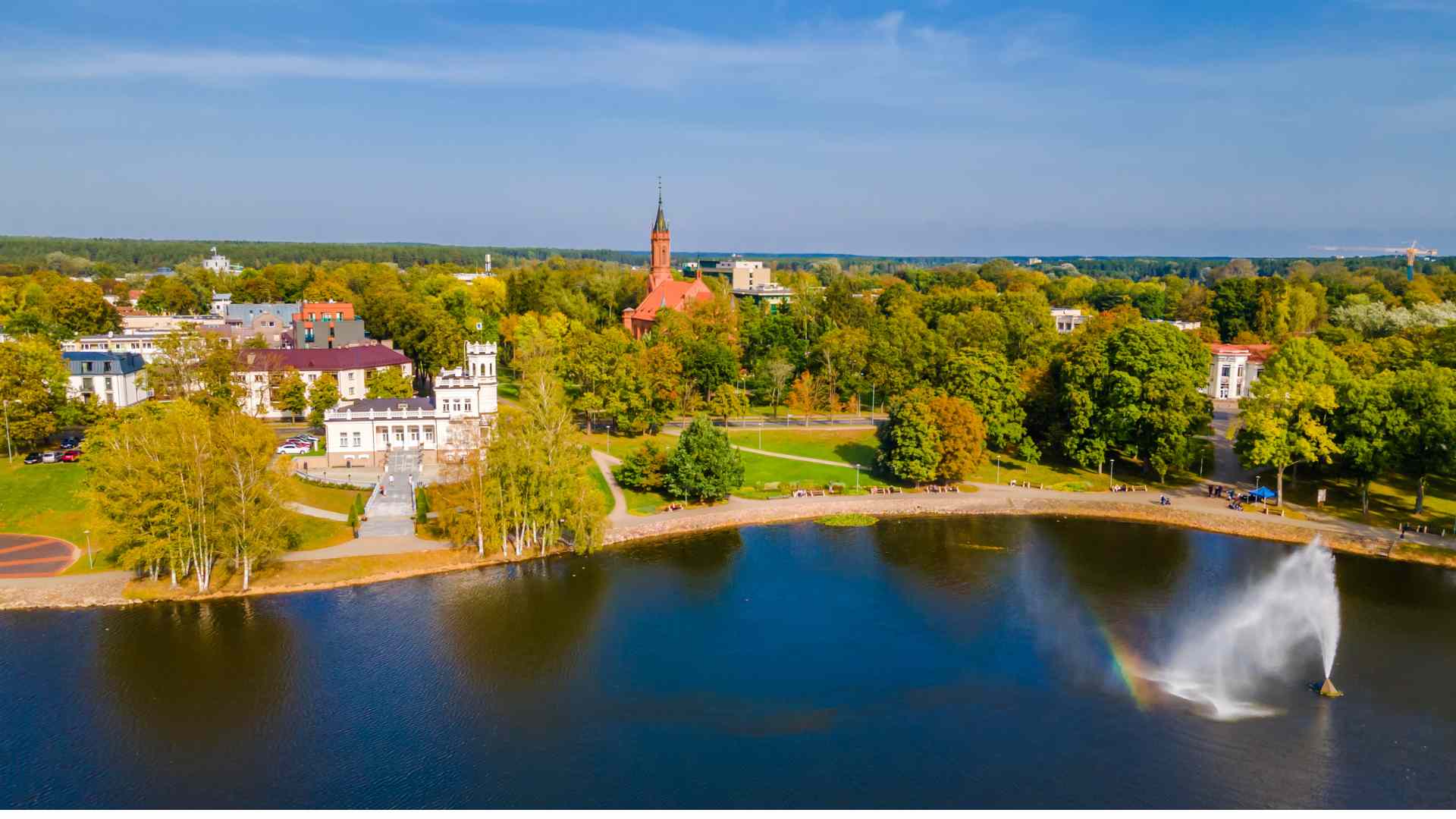
Druskininkai, nestled in the southern part of Lithuania near the borders with Belarus and Poland, stands as a testament to tranquility and wellness, attracting visitors with its serene landscapes and therapeutic waters. This spa town, renowned for its mineral springs and mud treatments, has been a beacon of health and relaxation since the 19th century. The healing properties of its natural resources have made it a haven for those seeking to rejuvenate body and mind amidst the calming embrace of nature. Modern wellness centers and sanatoriums offer a wide array of treatments that combine traditional methods with contemporary wellness practices, ensuring a holistic healing experience.
Beyond its spa facilities, Druskininkai is also a hub for leisure and cultural activities. The Grūtas Park, a unique open-air museum, showcases Soviet-era sculptures and artifacts, providing a glimpse into Lithuania’s past. For adventure seekers, the town offers the Snow Arena, one of the largest indoor ski slopes in Europe, and an adventure park that promises fun for all ages.
The town’s commitment to art and culture is evident in its numerous galleries and the annual Druskininkai Poetic Fall festival, celebrating Lithuania’s literary heritage. Surrounded by lush forests and situated on the banks of the Nemunas River, Druskininkai embodies a perfect blend of natural beauty and wellness-focused living.
9. Palanga: A Seaside Resort with Amber and Aristocracy
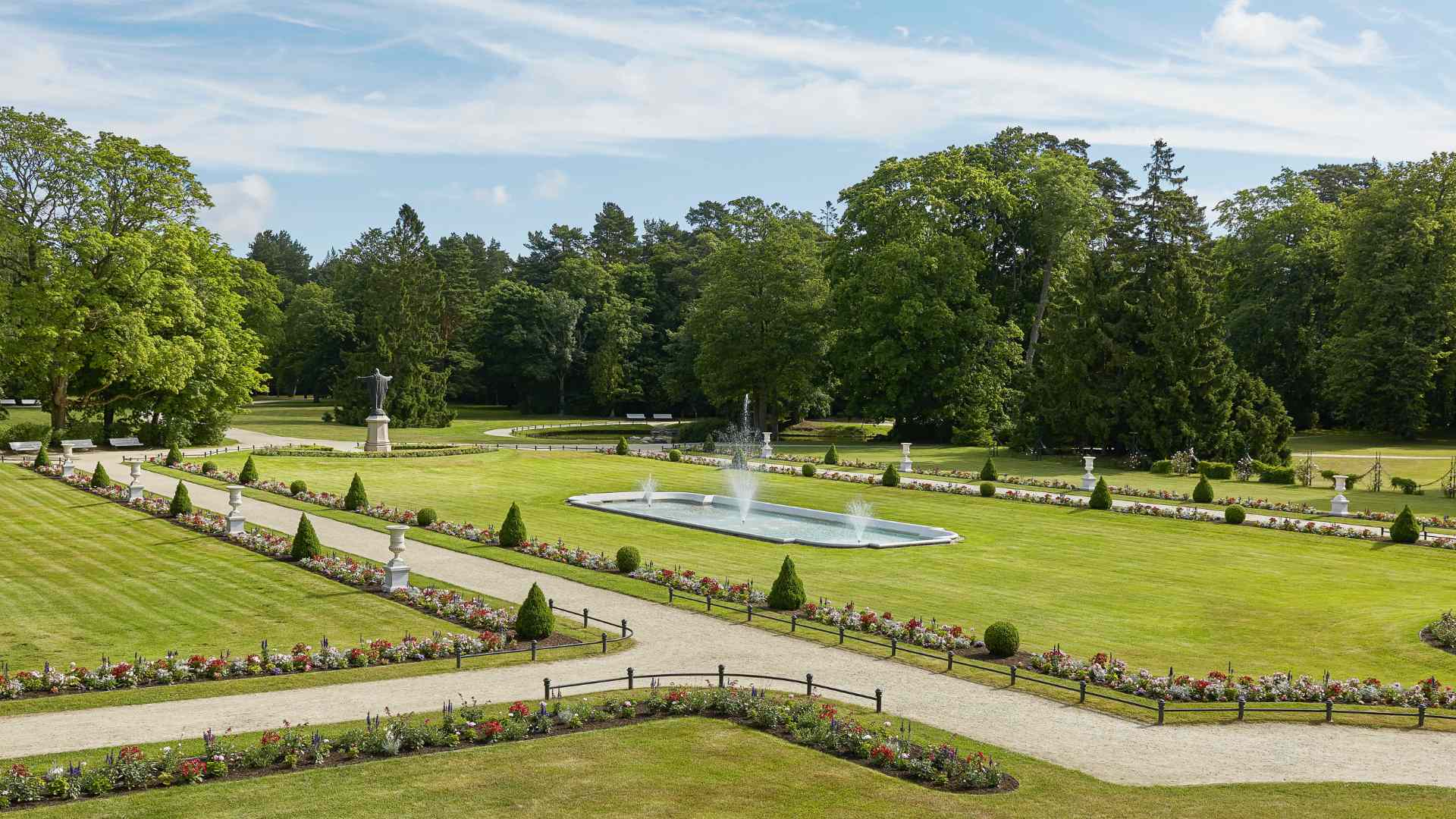
Palanga, Lithuania’s premier seaside resort, beckons with its expansive white sandy beaches and vibrant amber-strewn shores, offering a blend of leisure and cultural experiences. As the Baltic Sea gently laps against its coastline, Palanga comes alive with tourists and locals alike, seeking relaxation under the sun and the therapeutic benefits of sea air. The town is famous not only for its natural beauty but also for its rich cultural heritage, epitomized by the Palanga Amber Museum, housed in the historic Tiskevičiai Palace. This museum showcases an extensive collection of amber pieces, including rare inclusions that captivate the imagination with tales of prehistoric times.
Beyond the allure of its beaches and amber, Palanga’s botanical garden, established alongside the palace, presents a tranquil escape with beautifully landscaped gardens, meandering paths, and a variety of flora that blooms in vibrant colors. The bustling J. Basanavičiaus Street, the heart of Palanga’s social life, offers an array of cafes, restaurants, and entertainment options, where the melodies of live music and the laughter of happy visitors fill the air.
Palanga’s uniqueness makes it a perfect destination for those looking to enjoy the Baltic coast’s serene landscapes by day and its exuberant spirit by night.
10. Rumšiškės: A Journey Through Lithuania's Living History
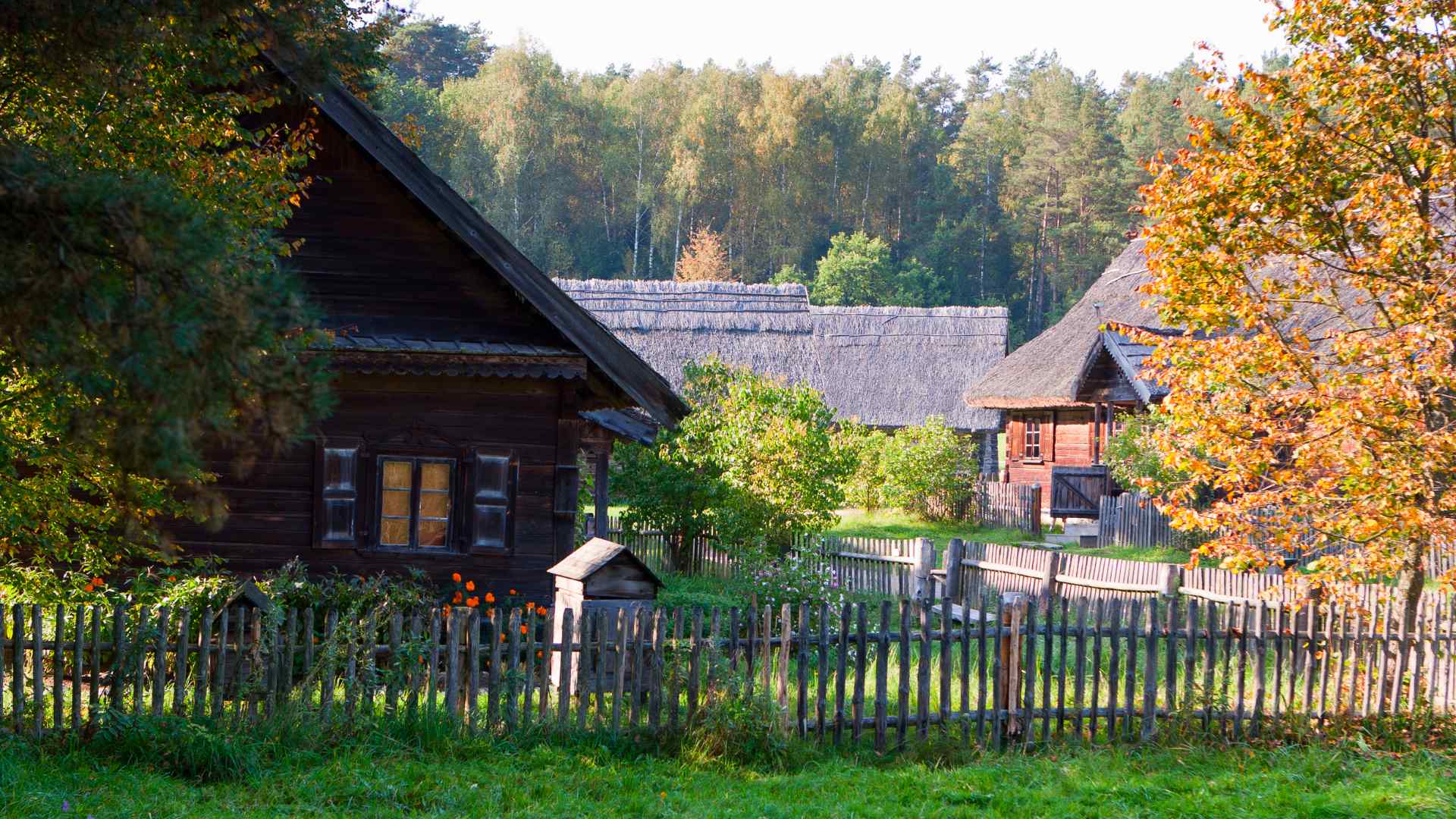
Rumšiškės, a captivating open-air museum nestled 17 miles (28km) from Kaunas, offers a unique window into the country’s rich cultural and historical tapestry. Spanning across a sprawling 195 hectares, it stands as one of the largest ethnographic museums in Europe, meticulously preserving the traditional Lithuanian way of life across various regions from the 18th to the 20th centuries. Visitors to Rumšiškės are transported through time as they wander among the authentic farmsteads, ancient wooden churches, and windmills, each piece telling its own story of a bygone era.
The museum is more than a collection of buildings; it’s a vibrant space where history comes alive. Throughout the year, Rumšiškės hosts a plethora of events, including folk music concerts, craft fairs, and traditional festivals, allowing visitors to immerse themselves in the customs and traditions that have shaped Lithuanian culture. Whether it’s witnessing the intricacies of ancient crafts, tasting traditional Lithuanian cuisine, or participating in seasonal celebrations, Rumšiškės offers a deeply engaging experience that connects the past with the present.
Set against the picturesque backdrop of the Lithuanian countryside, with its rolling hills and serene lakes, Rumšiškės is not just a place to visit but a journey through Lithuania’s soul and heritage.
Lithuania's Endless Allure
As our exploration of the best places to visit in Lithuania concludes, it’s evident that this country offers an extraordinary tapestry of experiences, blending natural beauty, historical depth, and vibrant culture. Each destination visited tells a part of Lithuania’s compelling story, from the ancient streets of Vilnius to the serene expanses of Aukštaitija National Park, showcasing the country’s rich heritage and the resilience of its people. Lithuania, though small in size, is vast in the diversity of its landscapes and the warmth of its welcome, promising unforgettable memories to those who venture through its territories.
The journey through Lithuania is not merely a tour of its geography but an immersion into a culture that has flourished through centuries, a testament to the spirit of a nation that has preserved its identity against all odds. The tranquil beauty of Druskininkai’s spa town, the enchanting history of Trakai Island Castle, and the lively shores of Palanga exemplify Lithuania’s ability to cater to a wide array of tastes and interests, making it a destination worthy of the top spot on any traveler’s list.

